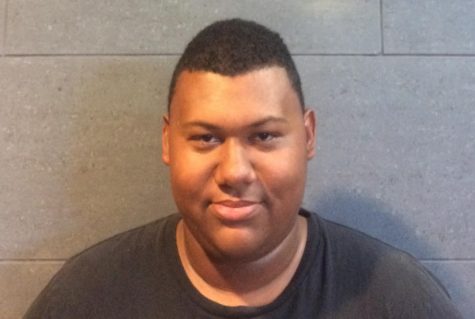Tolerance is scarce in a discriminatory culture
November 9, 2016
For the past 400 years, African Americans have been fighting a never-ending battle with discrimination. While many efforts failed, some are effective, and should be shown to everyone.
Can tolerance exist or will it always be a dream deferred?
The hope for tolerance came back into prominence after the death of Trayvon Martin. Through the #BlackLivesMatter movement people are once again taking a stand, but there is only so much it can do. Luckily, a school teacher and a musician already got a lot started.
Jane Elliott was a third grade teacher in 1968 when Martin Luther King was shot in Memphis. At her school in Riceville, Iowa she implemented an exercise that taught her third-grade students what discrimination really is. It is called the blue eyes/brown eyes exercise.
Elliot would make statements such as, “Blue-eyed people are smarter than brown-eyed people. They are cleaner than brown-eyed people. They are more civilized than brown-eyed people.”
Statements such as these provided the students with a feeling of superiority as opposed to those students who had been turned into outcasts. During one trial of the exercise, ABC made the entire experience into a documentary called, “The Eye of the Storm.” Her method of demonstrating discrimination was also tested among security guards at a prison to keep them from harming inmates based on the color of their skin. This experiment was shown fifteen years later in an episode of Frontline called “A Class Divided,” which acts as the sequel to “The Eye of the Storm.”
In anthropological terms, race is a social construct and not biological, as many people believe. The three characteristics of a biological race are being geographically distant from other sub species, having significant genetic differences from other subspecies, and having a concordant collection of multiple independent genetic traits.
The first characteristic is disproven through the fact that humans can and do live anywhere on the globe. The second characteristic is disproven because we are all genetically similar. Finally, the third characteristic is disproven through the similar traits all humans share.
SUNY Buffalo State Anthropology Professor, Melanie Mayberry, shows “A Class Divided” to demonstrate how the race system used today is non-biological and completely cultural. She allows her students to learn about the reasons race is a social construct. The thought of implementing this in classrooms now was something Mayberry was very supportive of.
She said that the use of Elliott’s exercise in classrooms today would receive a great deal of backlash because of the way it causes students to lose confidence as well as feel like a lesser person. People are more concerned with preserving other people’s feelings than showing what’s real. Social Work student Andrea Rogala agreed with Mayberry’s thoughts.
“With today’s younger generation, I think that this (Elliot’s experiment) could still be effective,” she said. “Children always want to learn and this makes them aware of something such as discrimination, and racism before they experience it firsthand. This could really shed light into what they are thinking and how they would react in a situation like that.”
Another way people could learn tolerance is through looking beyond the skin tone and looking at the personality. Musician Darryl Davis managed to befriend two high-ranking officials in the Ku Klux Klan. Davis spoke about the experience on the NPR radio show, Snap Judgment.
Davis met a Klansman, a Grand Dragon (state leader), and an Imperial Wizard (national leader) of the KKK and managed to befriend each one. Even the thought of this was never heard of yet he made it work. An attitude of understanding and just a bit of respect is a key aide in doing so.
“When the three Klan leaders here in Maryland – Robert White, Roger Kelly and Chester Doles – and I became friends with each one of them – when the three Klan leaders here in Maryland left the Klan and became friends of mine, that ended the Ku Klux Klan in the state of Maryland,” Davis said on the radio show Snap Judgment. “Today there is no more Ku Klux Klan in the state of Maryland. They’ve tried to revive it every now and then, but it immediately falls apart.”
His conversation showed that skin tone is just a color, the same way Jane Elliott did. Both managed to show that while people discriminate against each other they are only doing based on what they don’t know. Jane Elliott and Daryl Davis are two highly tolerant individuals who are slowly eliminating hate in their own way.
The idea of tolerance does exist but it’s something that isn’t shown in the mainstream media because it happens so infrequently. Many media outlets are focused on the arguments, the killing and the violence of everyday situations; yet the idea of tolerance sprouts up every once in a while. In that way tolerance is something unique and really creates an impact when it’s read about, broadcast, or heard in the news.
email: viera.record@outlook.com




